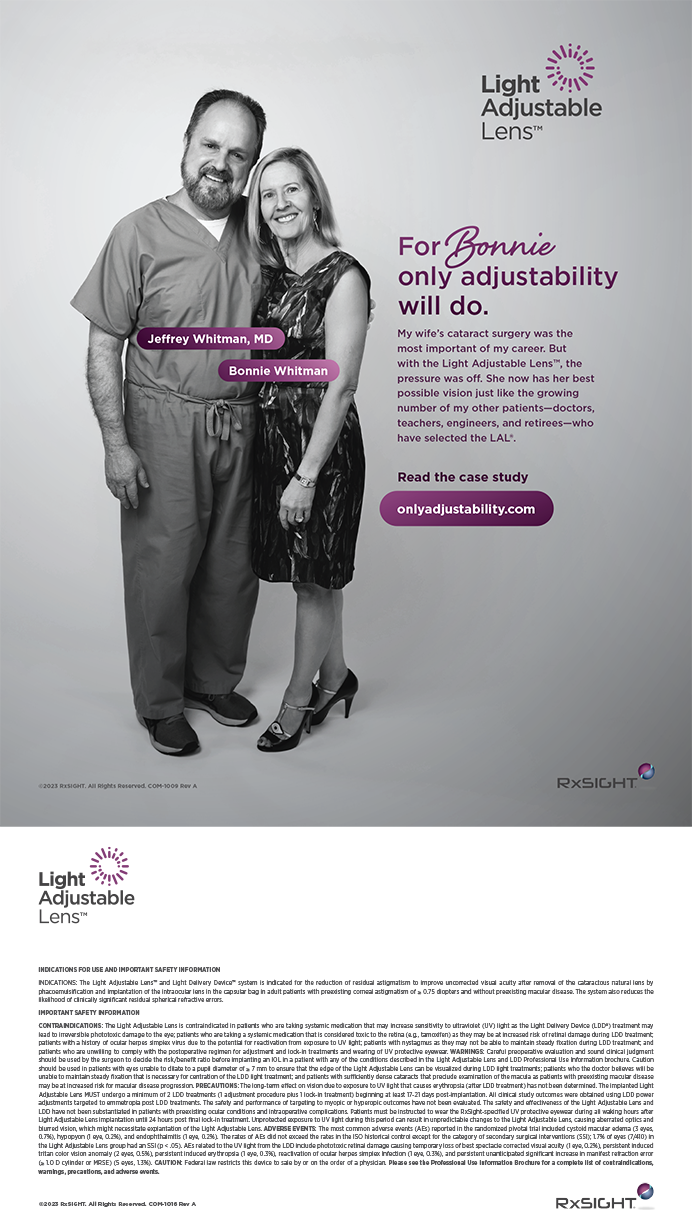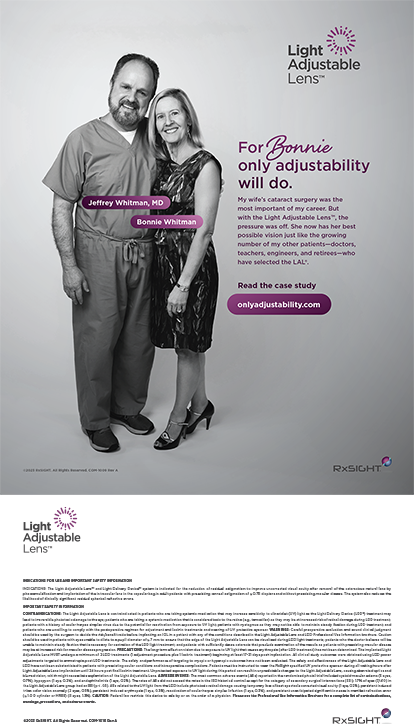Ophthalmic investments today indicate what lies ahead for the specialty. CRST asked Gil Kliman, MD, managing director at InterWest Partners, what is on the investment firm’s dashboard and what the future of ophthalmology and ophthalmic investing looks like.
CRST: Why is ophthalmology an attractive specialty for investors?
GK: Ophthalmology continues to be one of the most attractive investment areas in medicine, because you have a convergence of innovative technology such as lasers, antibody therapy, and gene therapy as well as innovative practitioners who adopt new technologies quickly and figure out ways to grow their practice by adopting new technologies.
CRST: What are some exciting areas that investors are attracted to right now?
GK: From an InterWest perspective, we like investing in new categories of therapy that are going to change the standard of care, and there is a lot of that happening in ophthalmology. For instance, there has been a lot of effort toward gene therapy throughout all different segments of medicine, but it has been, by far, the most successful in the eye, because it is a closed space where gene therapy can work more safely and effectively.
Also, we are now seeing multiple clinical trials for genetic defects of the retina that are showing that we can not only treat some of these diseases [but that] we may [also] be able to cure them and literally cure blindness. That is an area about which we are very excited.
We invested in AGTC, which is a public biotech company that was one of the first in ocular gene therapy. We see a lot of investment in targeted therapies, targeted drug therapies within the eye, of which gene therapy would be probably the leading one.
CRST: Do you have an example of a game changer on the device side?
GK: Glaukos, which pioneered the field of MIGS [microinvasive glaucoma surgery], is one of our investments. MIGS is all about using nanotechnologies, very small interventions with very tiny devices, to change the standard of care. In the case of Glaukos, the goal is to get patients potentially off of eye drop medications for the treatment of glaucoma and have them be completely treated with the nanotechnology device.
Robotics is another area that InterWest is excited about. Femtosecond lasers are essentially robotic, and we are seeing the next generation of devices as being more sophisticated, perhaps something that might have a robotic arm or actually have a fully humanoid form factor.
CRST: What else are ophthalmic investors interested in right now?
GK: Digital health is an area that we are very interested in right now. This includes smartphones and other consumer electronics that can be used for diagnostics in eye care. For instance, we have an investment in Gobiquity, a new company that has an app for primary care that uses a single smartphone photo of a child to analyze the red reflex to screen for important eye disorders, allowing earlier referral to eye specialists for amblyopia, refractive error, and other conditions.
CRST: Is the future bright for ophthalmic investing?
GK: Generally, there is more excitement than ever in investing in ophthalmology because of the innovative technologies that are available and the rapid adoption of those technologies by the very sophisticated ophthalmologists who know how to implement them in their practice[s] to change the standard of care and to create better benefits for patients.
Gil Kliman, MD
Gil Kliman, MD
- managing director, InterWest Partners, Menlo Park, California
- gkliman@interwest.com
- financial disclosure: board member of Avedro, Doximity, Glaukos, Gobiquity, Restoration Robotics, and ReVision Optics; prior board member of Epocrates, IntraLase, and LenSx




